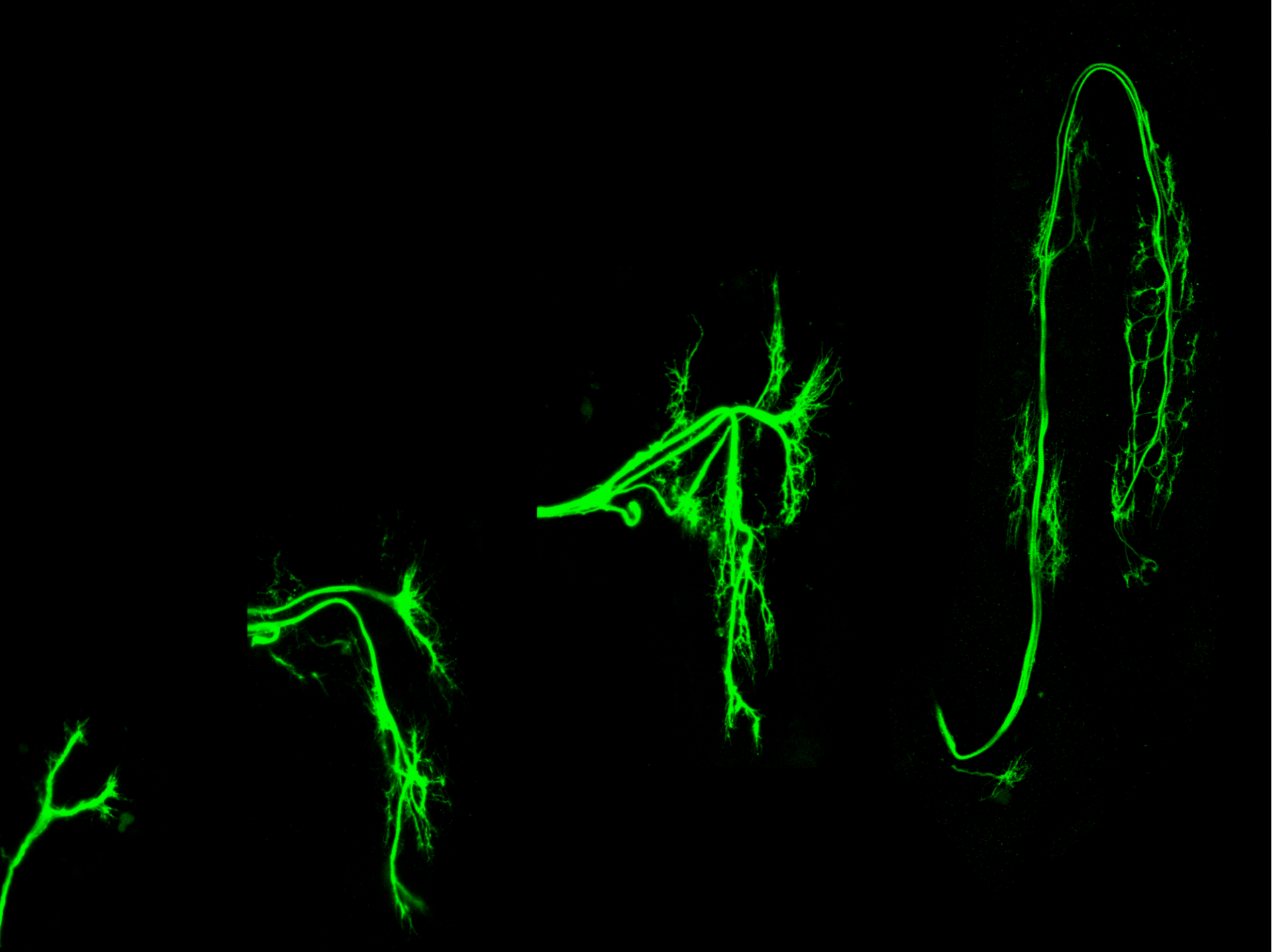Stereotyped terminal axon branching of leg motor neurons mediated by IgSF proteins DIP-α and Dpr10
For animals to perform coordinated movements requires the precise organization of neural circuits controlling motor function. Motor neurons (MNs), key components of these circuits, project their axons from the central nervous system and form precise terminal branching patterns at specific muscles. Focusing on the Drosophila leg neuromuscular system we show that the stereotyped terminal branching of a subset of MNs is mediated by interacting transmembrane Ig superfamily proteins DIP-α and Dpr10, present in MNs and target muscles, respectively. The DIP-α/Dpr10 interaction is needed only after MN axons reach the vicinity of their muscle targets. Live imaging suggests that precise terminal branching patterns are gradually established by DIP-α/Dpr10-dependent interactions between fine axon filopodia and developing muscles. Further, different leg MNs depend on the DIP-α and Dpr10 interaction to varying degrees that correlate with the morphological complexity of the MNs and their muscle targets.

